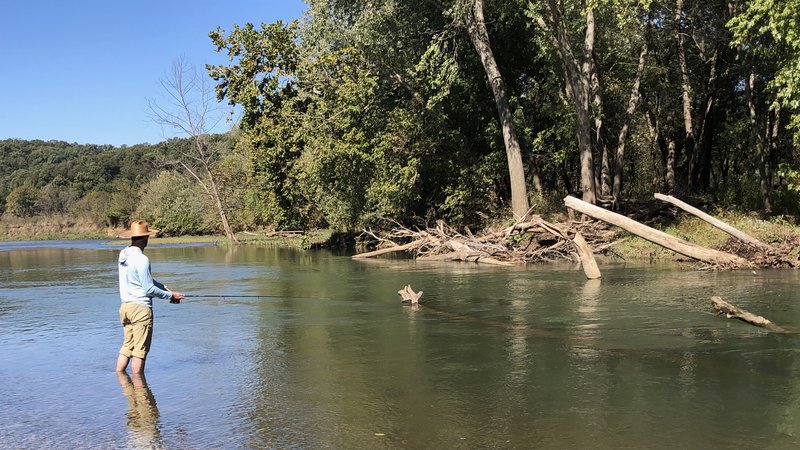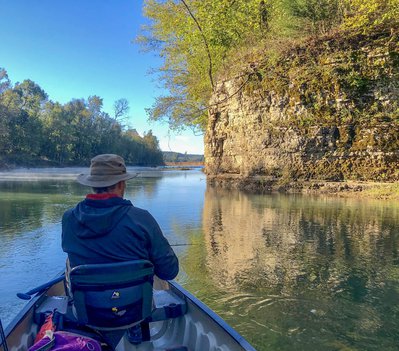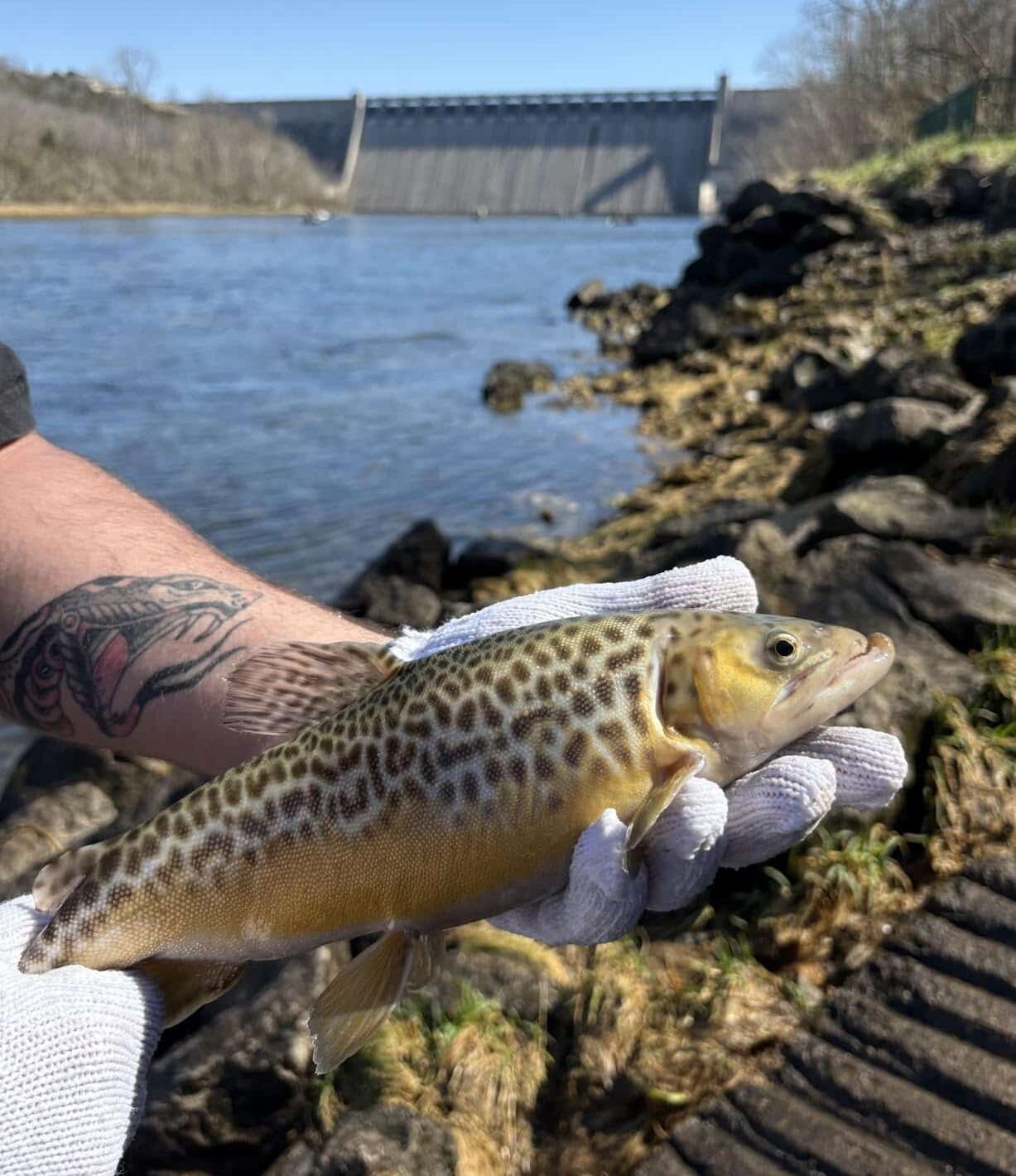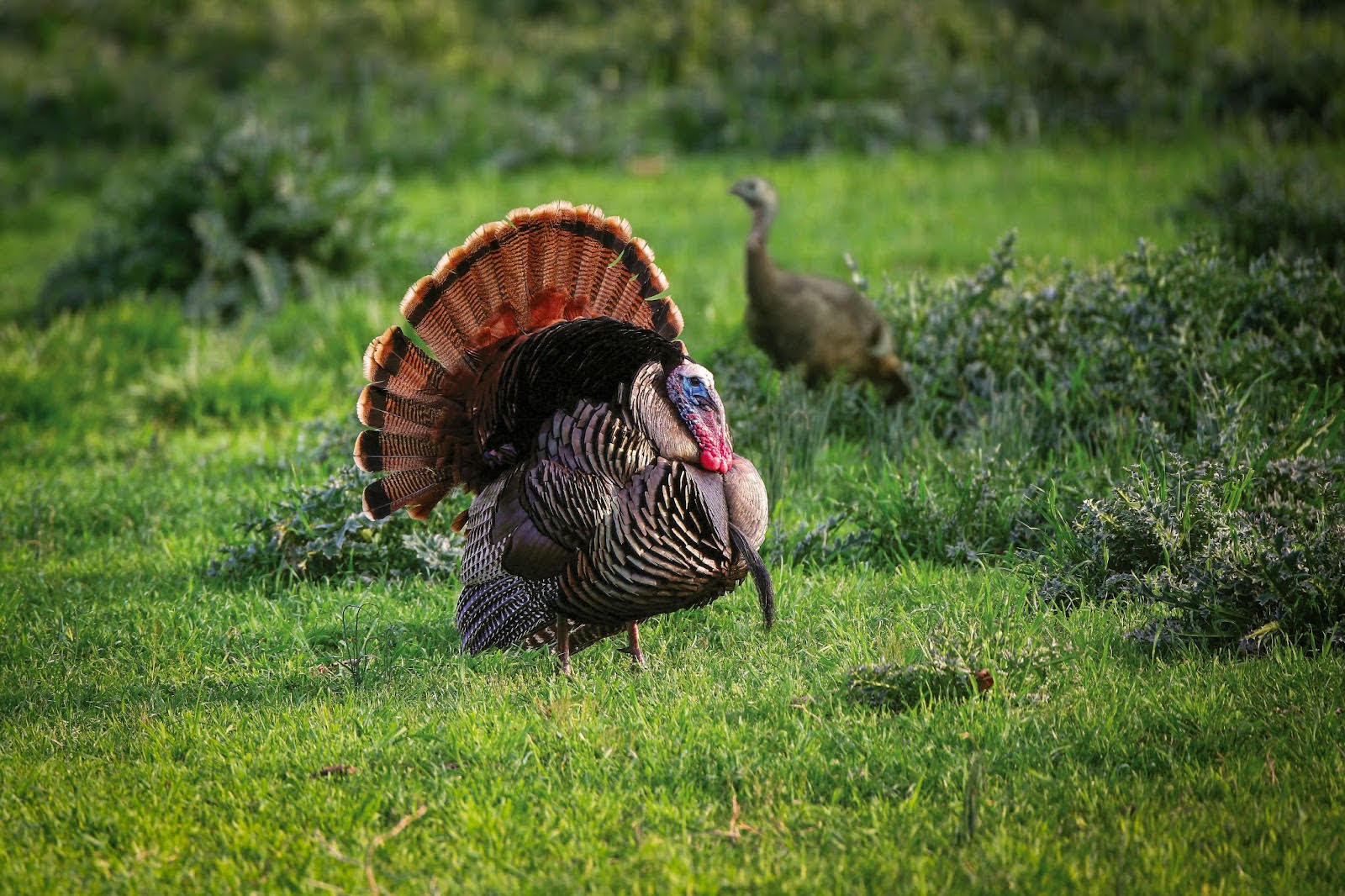Wedington WMA presents nonhunting opportunities in spring
BY Jim Harris
ON 04-13-2022

April 13, 2022
Jim Harris
Managing Editor Arkansas Wildlife Magazine
FAYETTEVILLE – The rolling Wedington Wildlife Management Area, situated within the Ozark-St. Francis National Forests, offers fall hunting for deer and dove, but the area is as well known among local residents for its year-round nonhunting activities.
The 15,915-acre WMA, less than a half-hour drive from downtown Fayetteville via Arkansas Highway 16 or U.S. Highway 412, is run in a cooperative agreement between the Arkansas Game and Fish Commission and the U.S. Forest Service. The popular 102-acre Lake Wedington, for which the WMA is named, and the concessions around it (cabins, campsites, pavilion, paddling rentals and picnic shelters) are operated by the USFS.
Deer hunting is almost entirely by bow, with the archery season running usually from late September to the end of February, save for two days of modern gun hunting by permit in November, plus youth hunts in November and January. Also, the USFS administers a permit-only mobility-impaired modern gun hunt in early October.
The AGFC manages 20-25 acres of the WMA for dove hunting with four dove fields planted annually with either sunflowers or millet, or with top-sown wheat.
“The WMA is unique in that it’s separated from the larger part of the National Forest,” Mark Hutchings, AGFC assistant chief of wildlife management Division based in Eureka Springs, said. “It’s in parts of Benton and Washington counties just west of Fayetteville. It’s primarily forested. The deer hunting is high quality. We have limited open lands that we manage with some food plots. There are also a few open fields where we try to provide some dove hunting on some small fields.”
The area has other areas of open land that the Forest Service leases for cattle grazing to private individuals.
Though visitors might see a turkey or hear the “bobwhite” call of quail, Hutchings said, there is no turkey season or quail season on Wedington WMA (nor bear or alligator hunting). With no turkey hunters out and about in April, it makes Wedington more conducive to the user of its many hiking trails and horseback riding trails, Hutchings said.
Its proximity to the often overlooked Illinois River, and the Chamber Spring Public Access access on the north-northwest portion of the WMA, also offers paddling opportunities, he said. “We get floaters on the river, and in the winter even some duck hunting will go on.”
Conservation partners, such as the Illinois River Watershed Partnership, advocate for and promote important conservation efforts in this region, which feeds this river running through one of the fastest-growing areas in the state.
Lake Wedington has largemouth bass, bream, catfish and crappie. Anglers can target smallmouth and largemouth bass in the Illinois River, along with bream and catfish.
The forest is a mix of oak and pine woodland. Hutchings said the Forest Service has thinned parts of the forest, allowing for some herbaceous growth that is conducive to wildlife. And that means Wedington is a destination for wildlife watchers. “It would really be some prime woodland habitat,” he said. “It gets a lot of use from (people from) Fayetteville … It’s truly a nice area and has some great habitat on it. There is definitely an opportunity for watchable wildlife.” Squirrels, rabbits and a variety of resident and migrant songbirds can be spotted, along with the deer, dove, turkey and quail, as well as native grasses.
The AGFC maintains six rotated food plots for deer, he said. “There are two primary locations that we manage for dove fields, one on the north end that they refer to as the ‘small game area.’ And a couple of other fields that are managed for dove hunting opportunity on the west side of the area by (Arkansas) Highway 16), at the furthest west boundary of the WMA.
“There are years it’s been pretty pretty good and some it’s been pretty dismal. That’s how dove hunting is,” Hutchings said. “It’s not in a real ag-oriented part of the world so not conducive to pulling in large numbers of birds.”
He said the area is “pretty limited” on how many turkeys reside there, and numbers were very low for a long time, he added. About four years ago, turkey hunting was reopened in Benton County but Wedington has remained closed.
The trails in the WMA in April provide a getaway for the ever-increasing population of Washington and Benton counties. “There are quite a few trails. A lot of the locals utilize those trails. Along with the hiking trails, there is a lot of horseback riding that goes on there,” Hutchings said.
The area was formed in the Great Depression in the 1930s to reclaim warn-out farmland and to provide jobs for area residents. Lakes, cabins and a lodge were built, and years later underwent renovation. Administration of the area was transferred from the U.S. Soil Conservation service to the National Forest in 1954. It became a cooperative wildlife management area in 1999. Forest Service management is in the Boston Mountains District, with headquarters in Ozark.
Recent News

Catch a tiger by the tail(water)
Mar. 31, 2025
Subscribe to Our Weekly Newsletter E-mails
Don’t miss another issue. Sign up now to receive the AGFC Wildlife Weekly Newsletter in your mailbox every Wednesday afternoon (Waterfowl Reports are published weekly during waterfowl season and periodically outside the season). Fishing Reports arrive on Thursdays. Fill in the following fields and hit submit. Thanks, and welcome!

